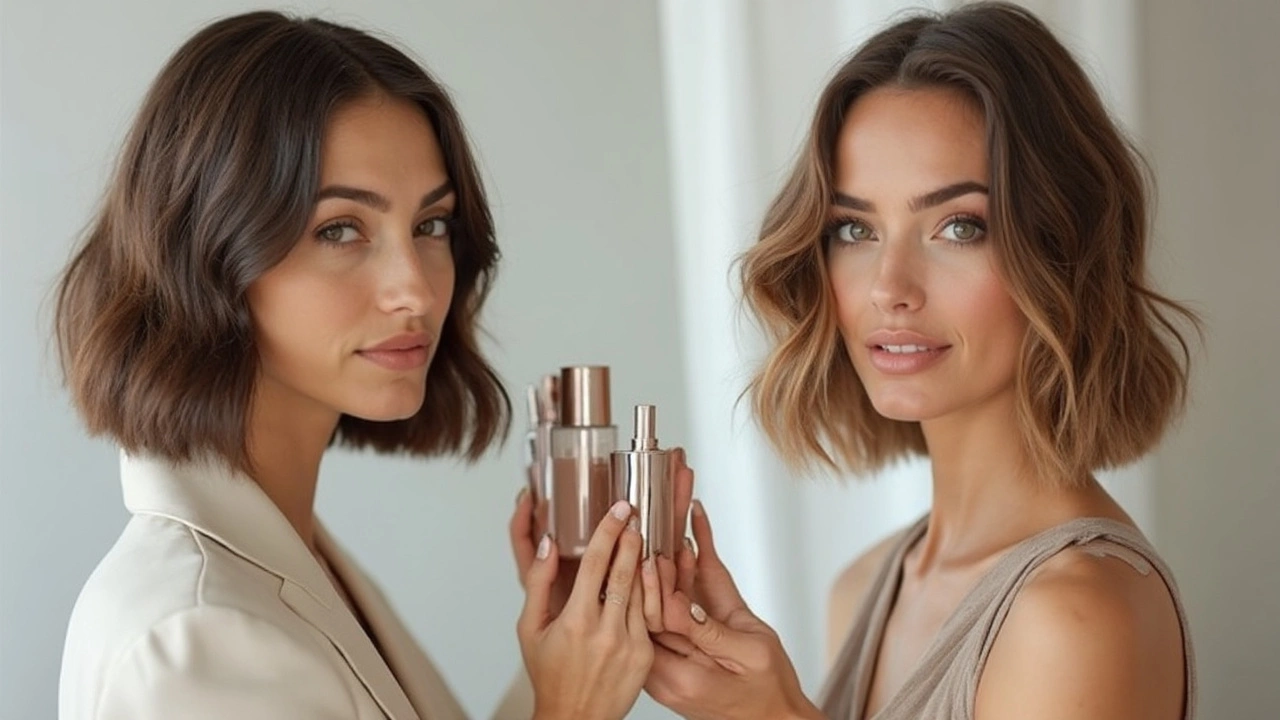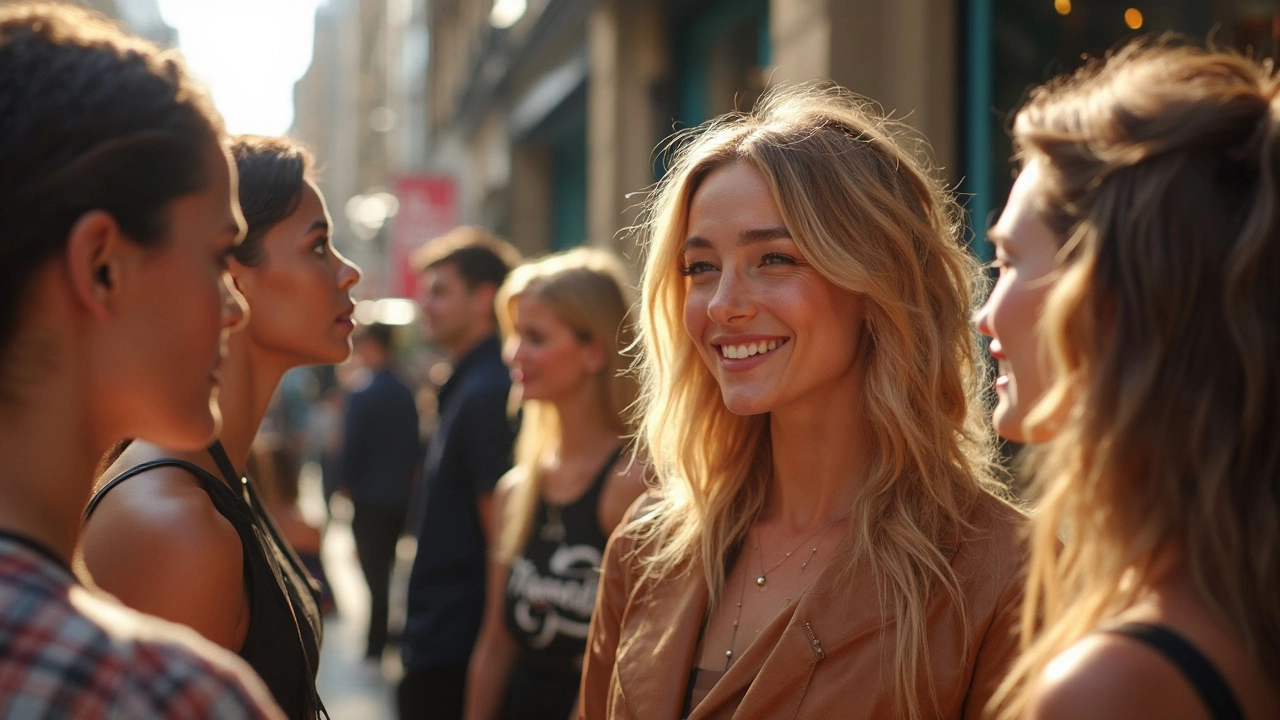Some people say long hair is more feminine. Others love the power of a short, sharp cut. It's not just about looks—hair length has a lot to do with the vibe you give off and how you handle daily styling.
There's no single answer to which is more attractive. Studies from real dating apps have shown that long hair can get more swipes, but take a scroll through TikTok and you'll see pixie cuts and lobs grabbing headlines just as much. What really matters? Hair that suits you, matches your style, and feels good to show off.
Before you grab the scissors or grow it out, think about your hair texture, face shape, and how much time you want to spend with your styling tools every morning. A short crop can look just as put-together and striking as long, flowing locks—with the right care and confidence. The trick is knowing what works for you and having the right products to back you up.
- What Shapes Our Ideas of Attractive Hair?
- The Science and Culture of Hair Length
- How Hair Length Impacts Styling and Products
- Finding the Best Length for You
What Shapes Our Ideas of Attractive Hair?
It's wild how much our views on what's "attractive" in hair have changed depending on where—and when—you look. Media is a huge driver. In the early 2000s, everyone wanted stick-straight, super-long hair because that's what you saw on red carpets and magazine covers. Flip back to the '90s, and cropped styles like the "Rachel" were everywhere. Right now, social media makes trends shift faster than ever, so both long and short hair grab attention in different circles.
Let's be real, culture and family play a big part too. In some places, long hair is linked to tradition or even seen as a sign of health or social status. Meanwhile, short hair has often been tied to rebellion or independence, especially in pop culture. There’s no universal standard—our opinions on what’s hot or not depend a lot on the people and messages around us.
It’s not all outside pressure, though. What we find attractive in hair shape or length is also about personality and self-image. Some people feel more confident with a fresh bob, others love letting their curls grow wild. A big research poll by YouGov in the UK actually found nearly a 50/50 split between folks preferring long and short styles on women. So the "rule" about long hair being best? Turns out, there isn’t one.
Bottom line: the idea of attractive hair depends on trends, culture, and our own comfort. You don’t have to fit one mold. There’s a style that can work for everyone.
The Science and Culture of Hair Length
Let’s get real—what makes certain hair lengths seem more attractive? It’s not just personal taste. A lot comes down to what we pick up from the world around us. Studies from social psychology show long hair is often tied to health and youth, and a 2017 study from the Journal of Social Psychology found that people often rate faces with longer hair as more feminine and approachable. But don't think short hair doesn’t have its fans. Short styles can look confident, bold, and stylish—think of how a sleek bob turns heads on the red carpet.
Cultural trends play a huge part, too. In the 1920s, flappers chopped their hair as a rebellion. The ‘70s loved natural waves and afros, while the ‘90s brought back chopped pixies. Today, trends mix and match—one day, everyone’s getting curtain bangs; the next, it’s buzzcut summer. Your background might even shape your view. In places like India or Brazil, longer hair is often seen as the beauty standard. In other countries, short hair represents modern style or even independence.
"Hair is almost always the first thing we notice about someone. It’s one of the few features you can change so easily, and it becomes a huge part of your identity," says Dr. Vivian Diller, a psychologist known for her work on beauty perception.
Let’s not forget how long hair can mean very different things. In some cultures, it can symbolize tradition and family, while others see it as a blank canvas for creative colors and styles. And if you’ve ever watched a makeover show, you know the crowd goes wild for a dramatic chop, with stylists always saying it can "bring out someone’s real face." It’s all about what works for you and what feels right, not what society says is the rule.

How Hair Length Impacts Styling and Products
Short and long hair seriously change what you’ll do every morning—and what bottles end up in your bathroom. With long hair, detangling is almost guaranteed. You’ll likely spend more on conditioner, hair masks, and leave-in sprays to keep it from drying out or breaking. Heat protection sprays become your best friend if you love curls or flat-ironed styles.
On the flip side, short haircuts mean less hair to manage but more frequent trips to your stylist to keep the shape sharp. Many with pixies or bobs use texturizing sprays or pomades to add volume and style. It’s all about finding products that boost structure without weighing things down. Plus, with less length, washing and drying take just a fraction of the time—no more endless towel-drying sessions.
Here’s a quick look at how hair care changes with each length:
| Hair Length | Styling Time (avg.) | Common Products | Salon Visits (per year) |
|---|---|---|---|
| Short | 10-15 min | Pomade, wax, light mousse | 8-12 |
| Medium | 20-25 min | Smoothing cream, light oil, texturizer | 6-8 |
| Long | 30+ min | Deep conditioner, detangling spray, serum | 2-6 |
Budget can play a part, too. Longer hair often costs more to care for at home but means fewer trips to the salon. Short cuts can flip that script: fewer products, but trimming every few weeks to keep things looking tight.
Styling options change with the length. Long hair lets you try braids, updos, and ponytails, while short hair leans hard on shape, parting, and bold texture. Each length shines if you match it to the right products:
- Long hair: Use wide-tooth combs, gentle hair ties, and silk scrunchies to avoid breakage. Hydrating masks help fight split ends.
- Short hair: Go for sea salt spray or a matte clay for definition without greasiness. Light finishes stop hair from looking flat or oily.
Finding the Best Length for You
Choosing between longer or shorter hair? It helps to get real about your hair texture, face shape, and daily routine. Not every trend will work for everyone, so matching your cut to your lifestyle actually makes things easier and better looking.
Start with your face shape. If you have a round face, longer layers can help elongate your look, while people with oval faces can get away with most lengths. Got a square jaw? Soft curls or a long bob will balance it out. Heart-shaped faces often look great with side-swept bangs or a chin-length bob. Take a look at the table below—these are proven basics makeup artists and stylists follow.
| Face Shape | Best Hair Length Tip |
|---|---|
| Round | Long layers, avoid blunt bobs |
| Oval | Any length—experiment! |
| Square | Medium length with waves, long bob |
| Heart | Chin-length bobs, side-swept bangs |
| Long | Blunt bangs or full curls, chin/shoulder length |
Hair texture matters too. Fine hair can look limp if grown too long, so aim for a shoulder-length or shorter cut with some layers. Thick or curly hair gets bulky fast, but long layers can keep it in check while showing off volume. If your hair is somewhere in between, you’ve got more freedom, so play around a bit. Professionals say that a mid-length cut is the lowest maintenance for most hair types.
Think about your styling habits too. If you’re always in a rush, short styles like pixie cuts or bobs can save you a lot of blow-drying and detangling. On the flip side, long hair gives you tons of styling options, but needs regular trims and a stash of good conditioners and masks.
- Check out how much time you honestly want to spend on hair every week.
- Make a list of your favorite looks and see what length they have in common.
- Talk to your stylist—they know what’s likely to suit both your hair and your lifestyle.
- If you’re not sure, try a change in small steps. Go shorter bit by bit or add extensions for a preview.
One last tip: switch up your regular products whenever your hair changes length. Short hair might need light pomades for texture, while longer styles usually crave deep conditioners and frizz control serums. It’s all about giving your hair what it needs, right now.

